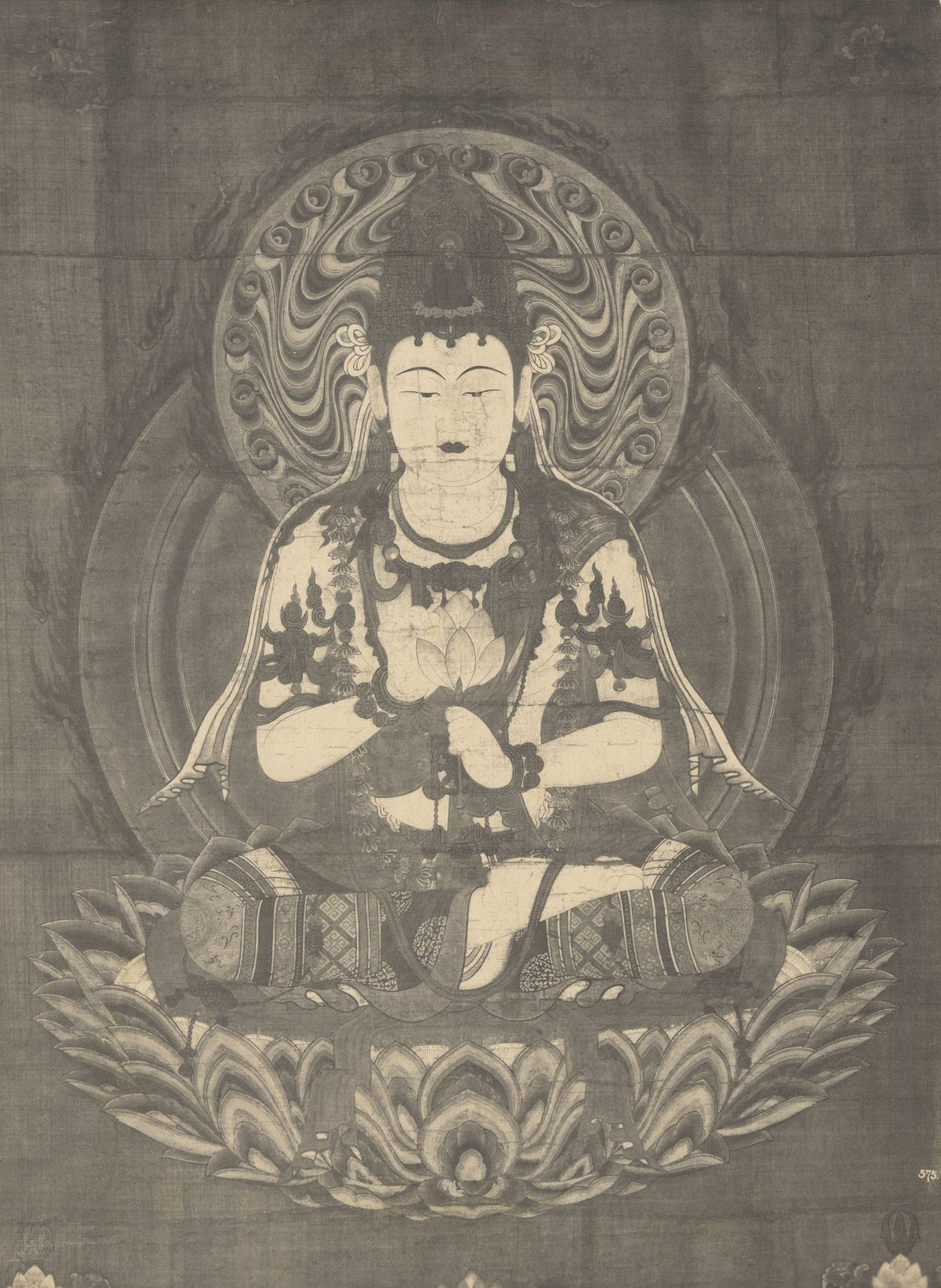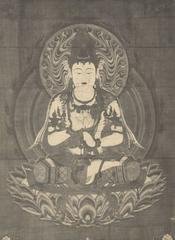
Tō-ji Temple Visiting Hours, Tickets, and Guide to Kyoto Historical Sites
Date: 14/06/2025
Introduction
Tō-ji Temple, located in Kyoto, Japan, represents an enduring symbol of the nation’s spiritual heritage and architectural prowess. Founded in 796 CE, Tō-ji is the only remaining guardian temple from Emperor Kanmu’s original plan for Heian-kyō, now recognized as a UNESCO World Heritage Site. As the headquarters of Shingon Buddhism, established by the eminent monk Kūkai (Kōbō Daishi), the temple is both a vibrant religious center and a living cultural landmark. Its five-story pagoda—the tallest wooden structure in Japan—alongside significant halls and tranquil gardens, provides a compelling journey through centuries of Japanese history, art, and spirituality. This guide delivers comprehensive insights into Tō-ji’s origins, architecture, religious significance, visitor information, seasonal highlights, and practical travel advice for an enriching Kyoto experience (Adequate Travel; Leaf Kyoto).
Table of Contents
- Origins and Foundation of Tō-ji
- Architectural Evolution
- Religious Significance
- Visitor Information: Hours, Tickets, and Access
- Role in Japanese Culture and Society
- Notable Events and Figures
- Seasonal Events and Nighttime Experiences
- Practical Information for Visitors
- Nearby Seasonal Attractions
- Frequently Asked Questions (FAQ)
- Plan Your Visit and Stay Connected
Origins and Foundation of Tō-ji
Tō-ji (“East Temple”) is one of Kyoto’s oldest and most significant Buddhist temples. Commissioned by Emperor Kanmu to spiritually protect the newly established capital, Tō-ji was completed in 796 CE. Originally paired with the now-lost Sai-ji (“West Temple”), Tō-ji became central to state rituals and imperial protection, marking the close relationship between Buddhism and Japan’s early government (Adequate Travel).
Architectural Evolution
Early Heian Period Design
Tō-ji’s initial layout mirrored Tang dynasty Chinese temple models, featuring a symmetrical central axis with the Kondō (Golden Hall), Kōdō (Lecture Hall), and the iconic five-story pagoda. The original structures reflected both continental influence and emerging Japanese architectural techniques (Medium).
The Five-Story Pagoda
Standing at 54.8 meters, the five-story pagoda is Japan’s tallest wooden tower and a defining landmark of Kyoto. The current pagoda, rebuilt in 1644 after several fires, features earthquake-resistant joinery and symbolizes the five elements of Buddhist cosmology (earth, water, fire, wind, and void) (Leaf Kyoto; BesidestheObvious).
Additions and Restorations
After Emperor Saga granted the temple to Kūkai in 823 CE, Tō-ji became the principal temple of Shingon Buddhism. The complex was expanded with new halls and Buddhist statuary. Despite recurring fires, key structures like the Kondō (rebuilt in 1603), Kōdō (1491), and the pagoda have been meticulously restored, preserving their historical and spiritual essence (Medium).
Religious Significance
Shingon Buddhism Headquarters
Tō-ji is the spiritual heart of Shingon Buddhism, founded by Kūkai (Kōbō Daishi). The temple houses significant Buddhist images, such as Yakushi Nyorai (Medicine Buddha) and mandala-inspired statuary arrangements in the Kōdō. Kūkai’s esoteric teachings, rituals, and art continue to shape the temple’s identity (Journey Through Japan).
Rituals and Festivals
The temple remains active with daily rituals, memorial services, and major public events. The monthly Kōbō-san Market, held on the 21st to honor Kūkai, blends spiritual observance with traditional commerce, drawing thousands of pilgrims and visitors (Inside Kyoto).
Visitor Information: Hours, Tickets, and Access
Visiting Hours
- Regular Hours: 9:00 AM – 5:00 PM (last admission 4:30 PM)
- Special Events: Extended hours during seasonal illuminations and festivals
Ticket Prices
- Temple Grounds: Free
- Kondō, Kōdō, Pagoda: 500–800 yen (special event pricing may apply)
Accessibility and Directions
Tō-ji is a 10–15 minute walk from Kyoto Station or a short ride to Toji Station (Kintetsu line). The grounds offer paved paths and ramps; some historic buildings may have limited access. Assistance is available for visitors with disabilities.
Travel Tips
- Visit on the 21st for the Kōbō-san Market.
- Arrive early or on weekdays to avoid crowds.
- Check the official Tō-ji Temple website for event and ticket updates.
Role in Japanese Culture and Society
Imperial and Political Connections
Tō-ji’s deep ties to the imperial court made it a center for national protection rituals. During the Heian period, it was one of only a few temples permitted within the capital, reflecting its elite status.
Artistic and Cultural Heritage
The temple’s art collection includes National Treasures and Important Cultural Properties. Its architecture and statuary have influenced generations of Japanese artists and played a pivotal role in transmitting esoteric Buddhist teachings from China to Japan.
Preservation and Modern Significance
Despite repeated destruction by fire and earthquake, Tō-ji has been faithfully restored, reflecting Kyoto’s commitment to heritage preservation. It remains a living temple, pilgrimage site, and major tourist destination (Medium).
Notable Events and Figures
Kūkai (Kōbō Daishi)
Kūkai’s stewardship transformed Tō-ji into the spiritual center of Shingon Buddhism. His influence extends beyond religion to Japanese education, calligraphy, and culture.
Resilience Through Adversity
Tō-ji has survived numerous fires (notably in 1486, 1489, and 1603) and has been rebuilt with imperial and community support, symbolizing resilience and continuity.
Modern Recognition
In 1994, Tō-ji was designated a UNESCO World Heritage Site, reaffirming its global cultural significance (Adequate Travel).
Seasonal Events and Nighttime Experiences
Seasonal Illuminations
During cherry blossom (late March–early April) and autumn foliage (late October–November) seasons, Tō-ji hosts spectacular nighttime illuminations. Admission for these events is usually 1,000 yen for adults. The illuminated pagoda and gardens offer exceptional photography opportunities and a magical ambiance (Discover Kyoto; Walkaround Blog).
Monthly Kōbō-san Market
Held on the 21st of every month, this vibrant market features hundreds of stalls selling antiques, crafts, food, and plants. Entry is free, but some temple areas may require separate tickets (Inside Kyoto).
Hanami (Cherry Blossom Viewing)
Tō-ji’s gardens burst into color each spring. Evening illuminations and picnics beneath the weeping cherry trees are a highlight. Arrive early to secure a spot and check the Kyoto City official event calendar for bloom forecasts (Walkaround Blog).
Autumn Foliage
Vivid maples and ginkgo trees create a dramatic landscape in autumn. Nighttime events feature illuminated paths and seasonal sweets from local vendors. Tickets for these events are typically 1,000 yen (Walkaround Blog).
Religious Ceremonies and Festivals
Tō-ji hosts a full calendar of Buddhist ceremonies, including goma fire rituals and Kūkai memorial services, providing a window into living esoteric traditions (World History Encyclopedia).
Antique and Craft Fairs
In addition to the Kobo-san Market, Tō-ji occasionally holds antique and craft fairs, especially during holidays and festival seasons (Discover Kyoto).
Culinary Experiences
During seasonal events, enjoy local delicacies such as matcha desserts and traditional wagashi from temple-area cafes and stalls (Agoda).
Practical Information for Visitors
- General Hours: 8:30 am – 5:30 pm (last entry 5:00 pm; shorter hours in winter)
- Admission Fees: 500–800 yen for main halls and pagoda; higher for special events
- Accessibility: Paved paths and ramps throughout most of the site; some buildings have limited access
- Getting There: 10–15 minute walk from Kyoto Station or Toji Station (Kintetsu line)
- Amenities: Restrooms, multilingual guides, and event stalls available
- Photography: Allowed outdoors; restricted in some halls—check signage
- Guided Tours: Occasionally offered, especially during major events
- Health & Safety: Follow current health guidelines, especially during large events (Agoda)
Nearby Seasonal Attractions
Tō-ji’s central location near Kyoto Station makes it an excellent base for exploring:
- Fushimi Inari Shrine: Famous for its thousands of vermilion torii gates
- Kyoto Tower: Offers panoramic city views
- Kyoto Botanical Gardens: Hosts seasonal flower events
Frequently Asked Questions (FAQ)
Q: What are Tō-ji’s visiting hours?
A: Generally, 8:30 am–5:30 pm (last entry 5:00 pm), with extended hours for special events.
Q: How much are tickets?
A: Temple grounds are free; main halls and pagoda require 500–800 yen. Event fees vary.
Q: Is Tō-ji accessible for wheelchair users?
A: Most grounds are accessible; some historic buildings have limited access.
Q: Are guided tours available?
A: Occasionally, especially during festivals—check the official website.
Q: When is the best time to visit?
A: During cherry blossom (late March–early April), autumn foliage (late October–November), or on the 21st for the Kōbō-san Market.
Q: Can I take photos?
A: Yes, outdoors; restrictions apply in certain halls.
Plan Your Visit and Stay Connected
Discover the rich history and spiritual beauty of Tō-ji Temple on your next trip to Kyoto. For real-time updates, travel tips, and event guides, download the Audiala mobile app. Explore more about Kyoto’s cultural heritage and join our community on social media for the latest news and events.
Enjoy your journey through time and tradition at Tō-ji Temple!
References and Further Reading
- Adequate Travel
- Medium
- Leaf Kyoto
- Journey Through Japan
- Discover Kyoto
- Walkaround Blog
- Inside Kyoto
- Agoda











































































